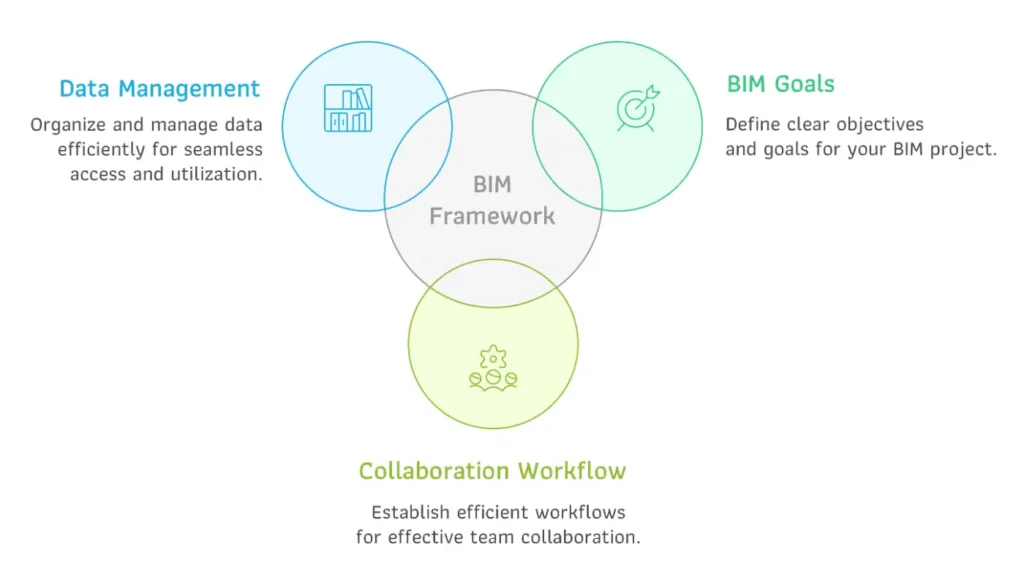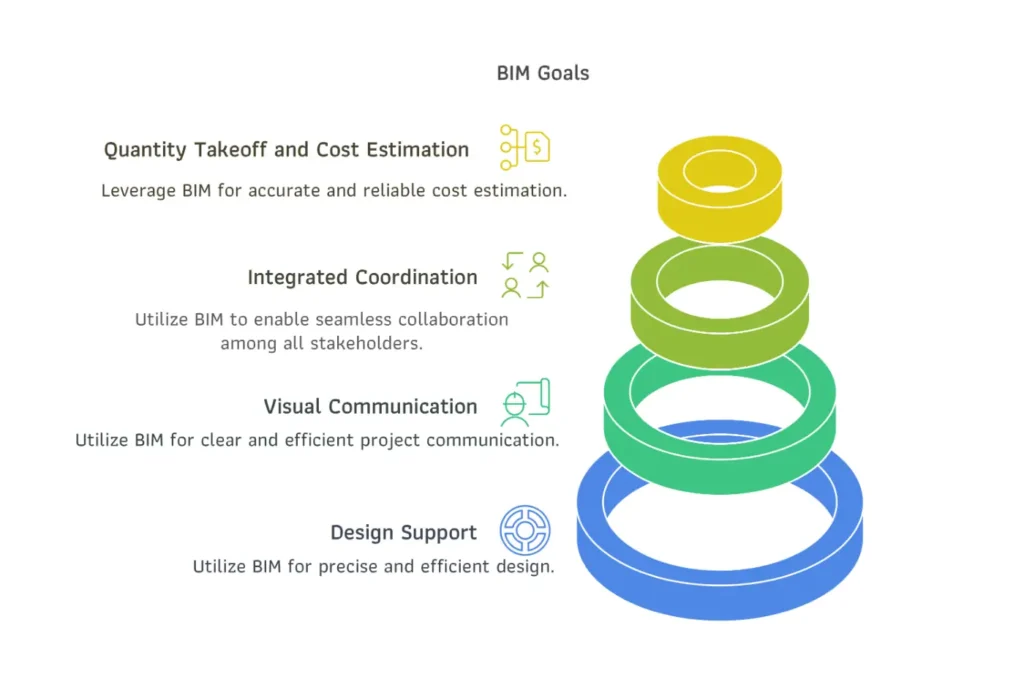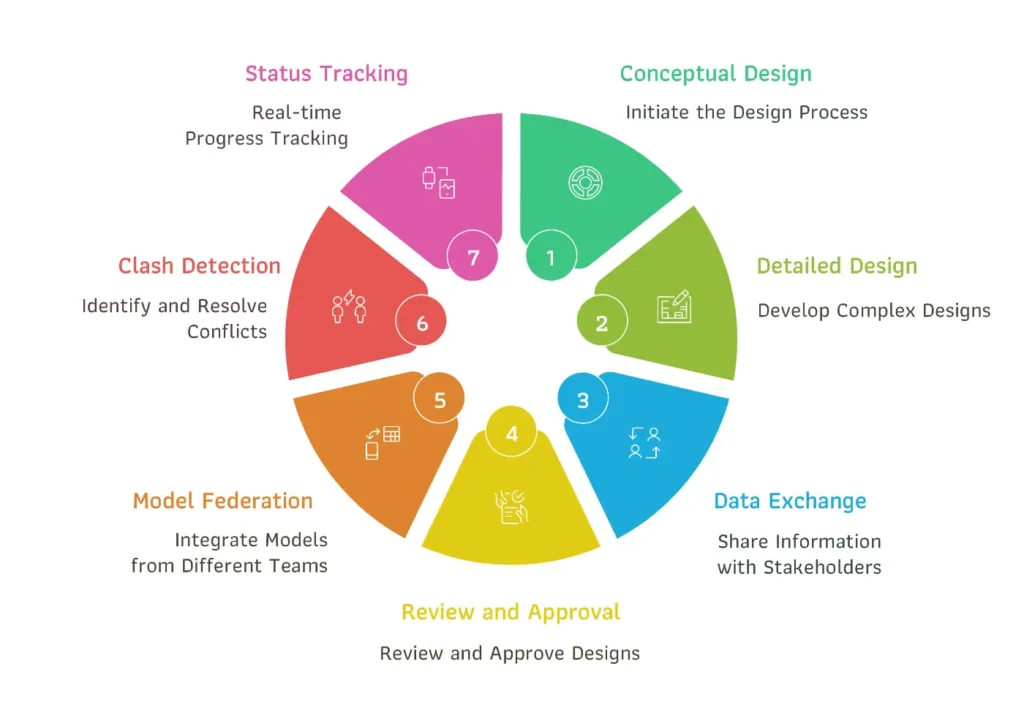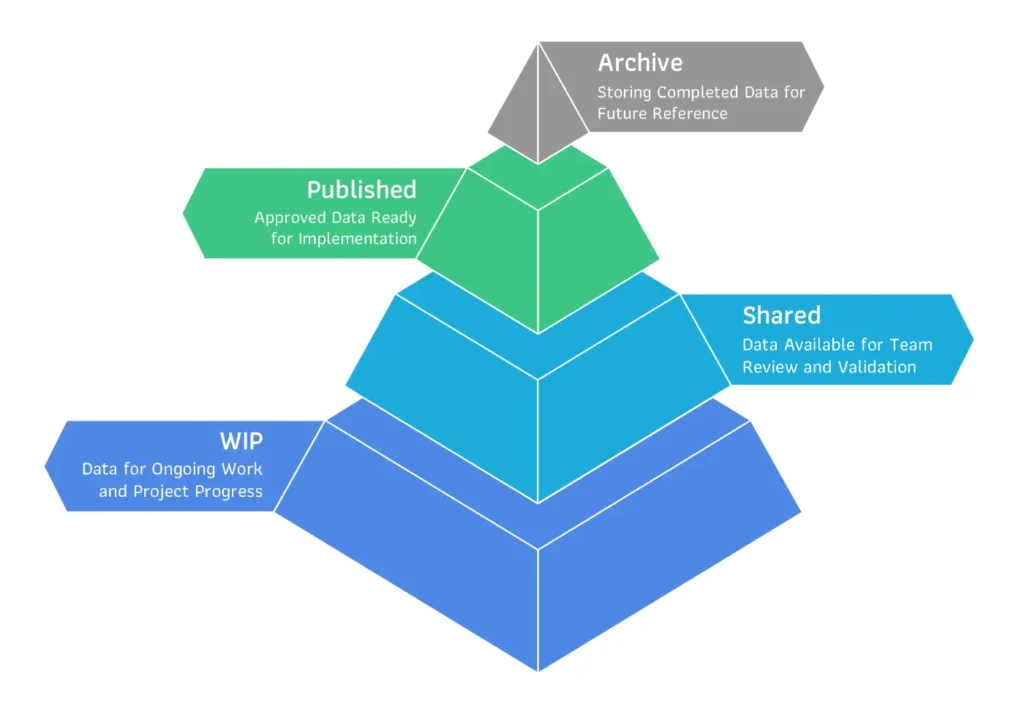As construction projects become increasingly complex and demand seamless collaboration across multiple disciplines, Building Information Modeling (BIM) is no longer just an “option”—it has become a necessity, particularly for Mega-projects such as mass transit systems, expressways, and overpass bridges.
BIM goes far beyond 3D modeling. It is a powerful tool for Project Information Management, enabling stakeholders to oversee and optimize the entire project lifecycle—from conceptual design through to handover and long-term facility management. Implementing an effective BIM framework helps streamline processes, align team objectives, and minimize design and construction errors.
This article presents a practical guide to developing a BIM Framework based on three essential pillars:
- BIM Goals
- Collaboration Workflow
- Data Management
These principles are tailored to suit the needs of complex infrastructure projects in Thailand and beyond.

1. BIM Goals: Defining Purpose-Driven Implementation
Setting clear BIM Goals is a critical first step to ensure all stakeholders share a common understanding of the project’s direction and the intended outcomes of using BIM. These goals typically fall into four key categories:
- Design Support
- Visual Communication
- Integrated Coordination
- Quantity Takeoff and Cost Estimation
Each goal influences the Level of Development (LOD) required and impacts workflows at various project stages. Clearly defined goals enable more effective workflow planning, reduce conflicts between disciplines, and improve data accuracy throughout the project.
In addition, it is essential to assign specific roles such as BIM Manager, BIM Coordinator, and BIM Modeler to establish clear communication pathways and ensure consistent data delivery. When executed correctly, this leads to the full realization of BIM’s potential in large-scale projects.

2. Collaboration: Enabling Seamless Multi-Disciplinary Integration
Effective collaboration is at the core of BIM success in Mega-Projects. Coordinating among architects, engineers, contractors, and project owners requires transparent, verifiable, and streamlined processes to minimize errors and ensure alignment throughout the project lifecycle.
BIM collaboration begins as early as the Conceptual Design Phase and continues through Detailed Design, facilitated by structured workflows. These include:
- Model development and exchange protocols
- Design review and approval processes
- Model federation and clash detection
- Real-time project tracking
The success of collaborative workflows hinges on well-defined responsibilities, open communication, and a centralized platform for data sharing. These factors contribute to faster and more informed decision-making at every stage of the project.

3. Data Management: Establishing Reliable and Standardized Information Flow
Robust Data Management is essential to maintaining the integrity and continuity of BIM throughout the project. In Mega-projects involving diverse disciplines, standardized data organization ensures that all teams can access the most current and accurate information.
Adopting international standards such as ISO 19650 provides a solid foundation for organizing project data into four main categories:
- Work In Progress (WIP) – Ongoing development files
- Shared – Files available for interdisciplinary review
- Published – Final, approved documentation
- Archive – Completed and stored records
Utilizing these categories within a Common Data Environment (CDE) reduces the risk of version control issues and enhances document management efficiency. High-quality data management is the cornerstone of a successful BIM project and ensures full traceability for future reference.





